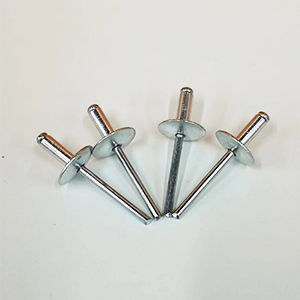Rivet connection is a non-detachable static connection that uses rivets to connect two or more components together. It is commonly known as riveting. The general equipment is plates or aluminum profiles.
There are two types of rivets: solid and hollow. Most of the rivets in life are solid rivet connections. Solid rivet connections are mostly used to connect metal parts with large and strong bearing capacity. However, hollow rivet connections are less common and are used to withstand heavy metal parts. The connection of parts such as thin metal plates or non-metallic materials with small or weak force.
Riveting is divided into two types: cold riveting and hot riveting. The tightness of hot riveting is relatively good, but there will be a gap between the rivet rod and the nail hole, and no force can be transmitted. During cold riveting, the nail rod is thicker and the nail hole is full. , there is no gap between the nail rod and the nail hole.
The rivets are passed through the prefabricated holes on the riveted parts, so that two or more objects are connected together by the riveted parts. Such a connection cannot be disassembled, which is called a rivet connection, commonly known as riveting.
Riveting has the advantages of simple technology, good seismic resistance, impact resistance and solidity and reliability. The disadvantages are that the noise during riveting is very loud, which will harm the physical and mental health of employees, the structure is generally heavy and the strength of the riveted parts will be greatly weakened.
Although riveting is still the main method of connecting light metal structures (such as aircraft structures), in the connection of steel frames, riveting is mainly used in a few places subject to severe impact or vibration loads.

Related News
- Types of wire drawing rivets and anti-rust methods
- What are the functions of rivets?
- How to use blind rivets
- What is a rivet nut?
- Structure introduction and maintenance of rivet gun
- Application of Lantern Rivet Nut
- Classification and application of rivet standoffs
- The working principle and selection rules of riveting gun
- The use of rivet nuts
- Comparison of drawing rivet connection and traditional craftsmanship
- Where do blind rivets need to be used?
- Solutions to the problem of Haima rivet caps falling off in the machinery industry
- Common knowledge about ring groove rivets
- How to use blind rivet nuts? You will know after reading this



